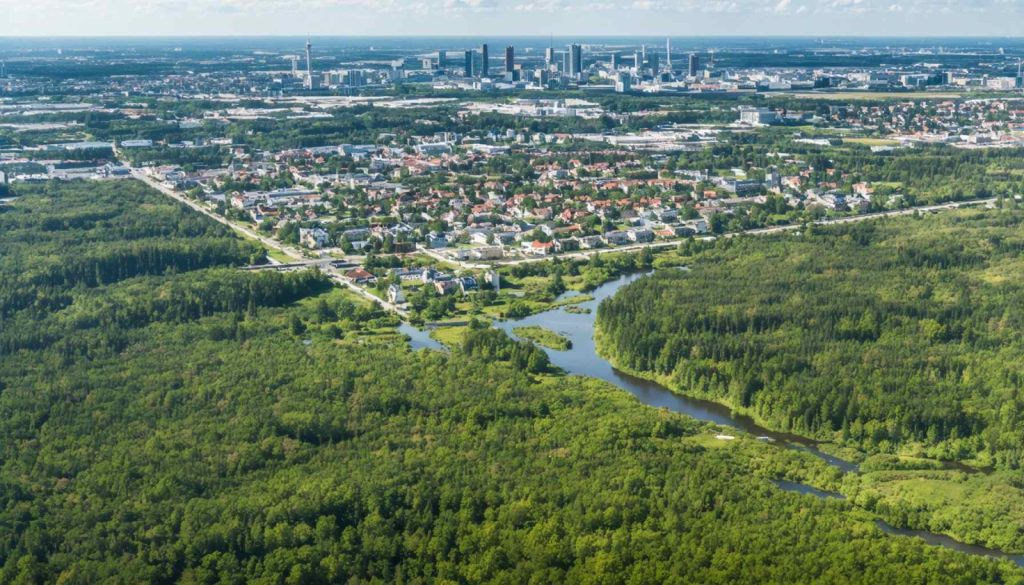
- Estonia skillfully balances nature and urban development through strategic zoning regulations.
- Zoning laws ensure ancient forests and modern cities coexist, preserving both environmental and architectural heritage.
- Municipal planners use these regulations to harmonize growth, protecting key areas like Lake Peipus and Lahemaa National Park.
- Zoning policies encourage eco-friendly constructions in rural areas and sustainable designs in urban cores.
- Estonia’s zoning invites tech industries and creative startups, fostering innovation while maintaining quality of life.
- The country exemplifies how zoning can lead to sustainable, harmonious development, blending progress with preservation.
Estonia, often renowned for its verdant landscapes and digital innovation, carefully treads the line between nature and urban sprawl. Ancient forests and cutting-edge cities coexist, thanks to a unique vision of zoning regulations that embrace both preservation and progress.
Imagine stepping into Tallinn, where centuries-old architecture brushes shoulders with sleek tech hubs. This vibrant tapestry is no accidental juxtaposition but a result of strategic zoning laws that ensure development respects Estonia’s environmental heritage. Municipal planners wield these regulations like a conductor’s baton, orchestrating growth harmoniously within diverse ecological compositions.
“We must cherish our natural and architectural heritage while welcoming advancement,” a Tallinn city planner remarked recently. Such philosophy is embedded deeply in zoning schemes that meticulously assess urban and rural boundaries. The country’s zoning ethos is not just a framework; it’s a statement of identity, where every new building’s shadow respects its natural surroundings.
Estonia stands at a crossroads of old and new, with zoning laws acting as guideposts. For instance, areas around Lake Peipus and Lahemaa National Park have been vigilantly protected. These regulations do not merely set limits but also embrace innovation by permitting eco-friendly constructions that minimize environmental impact.
In urban areas, skyscrapers rise with intention. Regulations demand designs that reflect Estonia’s commitment to sustainability and cultural respect. Buildings in urban cores must adhere to stringent codes, ensuring that sunlight reaches street level, and vistas remain unobscured.
Estonian zoning also serves as an invitation for new industries and talents, especially in tech. Creative hubs and startups find fertile ground in cleverly zoned districts within urban centers. Meanwhile, Estonia leverages these regulations to maintain quality of life, prevent congestion, and nurture community spaces.
Ultimately, Estonia’s zoning regulations champion a harmonious existence between nature and civilization, welcoming urban growth without sacrificing their immense natural beauty. This delicate dance of creation and conservation results in not just a country that thrives but a world leader demonstrating how zoning can be more than lines on a map—it can be a shared journey towards an enlightened future.
Takeaway: Estonia’s zoning principles highlight a progressive vision where growth respects heritage, framing a model for sustainable and harmonious living.
Unveiling Estonia’s Secret to Harmonious Urban Development
An In-Depth Look at Estonia’s Zoning Laws: Preservation Meets Progress
Estonia’s successful synergy of ancient forests and modern architecture is not only a testament to its visionary zoning laws but also a reflection of its sustainable development ethos. Here are more insights into how Estonia balances ecological preservation and urban innovation:
Real-World Use Cases and Success Stories
1. Tallinnovation: In Tallinn, urban development projects like Ülemiste City exemplify Estonia’s commitment to merging technology and sustainability. This tech hub is designed to be a “smart city within a city,” utilizing IoT and green technologies to create an efficient working environment.
2. Sustainable Tourism: Areas such as Lahemaa National Park integrate zoning laws to promote eco-tourism without compromising the area’s pristine natural beauty. Activities such as guided walks and educational tours demonstrate this delicate balance.
How Estonia’s Zoning Framework Operates
– Preservation-First Approach: Before any building permit is granted, assessments ensure environmental impact is minimal. These include evaluations of emissions, noise, and changes to natural landscapes.
– Innovative Urban Design: Urban cores in cities like Tallinn and Tartu are designed with open public spaces, green roofs, and eco-friendly public transportation systems to reduce carbon footprints and enhance livability.
Industry Trends and Market Forecasts
– Rising Digital Sectors: The zoning laws have nurtured a robust digital ecosystem, attracting global tech companies. This, in turn, is predicted to lead to a 15% increase in Estonia’s GDP over the next decade (source: [Statista](https://statista.com)).
– Eco-Conscious Architecture: A steady increase in demand for sustainable building solutions is expected, with Estonia poised as a leader in eco-architecture, driving green construction methods globally.
Controversies & Limitations
– Balancing Development: Critics argue that while Estonia has excelled in urban eco-design, rural areas still face infrastructure development challenges, potentially leading to regional disparities.
– Property Costs: As a side-effect of meticulous planning, property prices in zoned premium areas have skyrocketed, making affordability an issue for average residents.
Tips for Visitors and Investors
– Explore Urban Planning: Visitors interested in architecture can enjoy guided tours of Tallinn’s sustainable urban districts.
– Investment Prospects: Entrepreneurs should consider investing in Estonia’s burgeoning tech sectors or eco-tourism, which align well with the nation’s zoning principles.
Conclusion: Actionable Recommendations for Other Countries
– Adopt Integrated Zoning Practices: Nations can learn from Estonia’s example by adopting zoning laws that prioritize environmental sustainability alongside technological advancement.
– Engage Communities: Involve local communities in zoning discussions to foster a shared vision and accountability for urban development.
By embracing Estonia’s model of zoning, where ecological preservation co-exists with urban growth, cities around the world can aspire to develop in harmony with nature. For further details on Estonia’s sustainable strategies, visit their government’s official page at estonia.ee.



